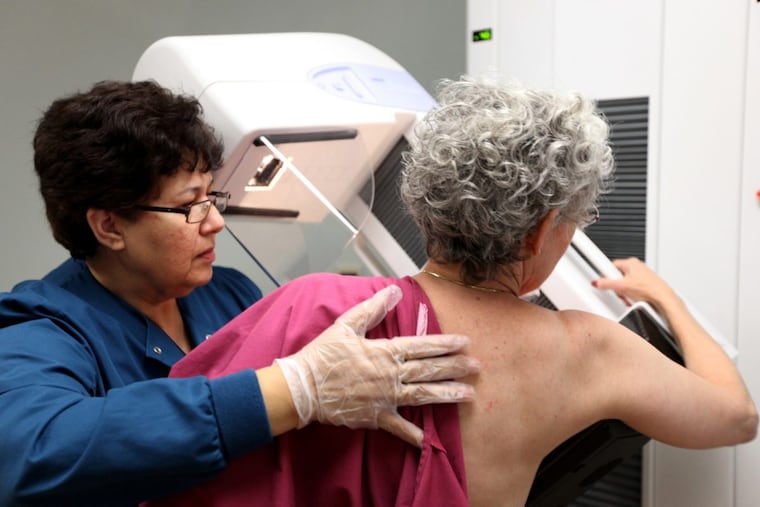Latest study in mammography debate: Annual screenings starting at 40 are best strategy
However, it also leads to the most false alarms.

For more than three decades, experts have hotly debated the best age to start breast cancer screening, how often to do it, and when to stop.
The latest study to assess these questions concludes that annual mammography starting at age 40 and continuing into old age would save the most lives, but it would also subject women to the most recalls and biopsies for suspicious mammograms that turn out to be false alarms.
The study, published online Thursday in the journal Cancer, used computer modeling to estimate the possible effects of the three screening strategies variously recommended by medical organizations: annual screening from age 40 to 84; annual screening at ages 45 to 54 and then every other year from ages 55 to 79; and every other year from ages 50 to 74.
For every 1,000 women who followed the first strategy, 12 deaths would be averted, a 40 percent mortality reduction, according to the research team led by Elizabeth Kagan Arleo, a radiologist at Weill Cornell Medicine in New York. In comparison, the second strategy would avert nine deaths, a 31 percent decrease in mortality, while the third strategy would avert seven deaths, a 23 percent reduction.
However, a woman getting screened annually starting at 40 could expect to be called back to evaluate a suspicious mammogram that turns out to be a false alarm once every 13 years. Callbacks typically involve more mammograms, ultrasound exams, and sometimes a needle biopsy to take a tissue sample.
For the 2.5 million women born in 1960, the first screening strategy would mean 6.8 million false alarms that led to 480,000 unneeded biopsies. In comparison, the second strategy would lead to 4.1 million false alarms with 266,000 biopsies, while the third would mean 2.3 million false alarms and 162,000 biopsies.
"Individual women should have the choice to reduce their risk of dying from breast cancer as much as possible, and as [the computer models] show, annual mammography starting at age 40 is the best way to do so," the researchers wrote.
In an accompanying editorial, American Cancer Society chief medical officer Otis Brawley pointed out limitations of the analysis. (The cancer society recommends the second strategy, with an option to start screening at age 40.)
For one thing, the computer modeling does not address the problem of "overdiagnosis" — detecting and treating cancers that would never cause harm if left undiagnosed. No one knows how many cancers are overdiagnosed, but estimates vary from 3 percent to 50 percent of cancers detected by screening, Brawley wrote.
For another, nearly 5 percent of cancer deaths occur among women diagnosed before age 35, when cancer is rare but typically very aggressive. That fact, Brawley said, underscores the need for a better screening test.
"Acknowledging the limitations of mammography is often misinterpreted as being against mammography screening. In fact, it is not," he wrote. "Our goal should be to provide thoughtful, balanced information so that women can make informed choices."